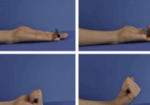Les 17 faits incontournables sur la formation continue en physiothérapie et en ergothérapie en 2025
Classé sous Non classé
1. Introduction à la formation continue
La formation continue en physiothérapie et en ergothérapie est plus qu'une simple exigence : c'est le cœur du développement professionnel. Dans un domaine en constante évolution, se tenir au courant des dernières avancées est non seulement judicieux, mais nécessaire. Pour les physiothérapeutes et les ergothérapeutes, la formation continue (FC) permet de perfectionner leurs compétences, d'améliorer les résultats des patients et de conserver leur permis d'exercice.
La formation continue favorise :
- Connaissances cliniques mises à jour
- Une plus grande crédibilité professionnelle
- Conformité avec les conseils d'agrément

2. Qu’est-ce que la formation continue en physiothérapie ?
La formation continue en kinésithérapie comprend des activités d'apprentissage qui approfondissent les connaissances et les compétences cliniques. Celles-ci peuvent inclure :
- Modules CEU en ligne
- Ateliers de thérapie manuelle
- Certifications avancées (par exemple, spécialiste clinique orthopédique)
La formation continue en physiothérapie garantit que les thérapeutes maîtrisent parfaitement les traitements et protocoles de rééducation actuels. Les sujets abordés incluent souvent la gestion de la douleur, la neurorééducation et les soins postopératoires.
3. Qu’est-ce que la formation continue en ergothérapie ?
La formation continue en ergothérapie se concentre sur les techniques thérapeutiques favorisant les activités de la vie quotidienne et l'autonomie fonctionnelle. Les thèmes de formation continue pour les ergothérapeutes incluent souvent :
- Intégration sensorielle
- Thérapie de la main
- Soutien en santé mentale
- Interventions pédiatriques ou gériatriques
Il permet aux thérapeutes d’appliquer des stratégies fondées sur des données probantes adaptées aux besoins des patients de tous âges.
4. Exigences de l'État en matière de formation continue pour les physiothérapeutes et les ergothérapeutes
Chaque État américain définit ses propres exigences en matière de formation continue :
- Certains États exigent 20 à 30 heures tous les 2 ans
- D'autres peuvent nécessiter un contenu spécifique (par exemple, l'éthique ou la jurisprudence)
- Le non-respect des exigences peut retarder le renouvellement de la licence
Restez informé via votre conseil d'agrément d'État pour éviter les problèmes de conformité.
5. Crédits CEU expliqués
UN Unité de formation continue (CEU) généralement égal à 10 heures de contact d'instruction. Cependant, la valeur exacte peut varier selon le prestataire et la réglementation de l'État. Les physiothérapeutes et les ergothérapeutes ont généralement besoin d'un nombre fixe d'UFC pour le renouvellement de leur licence, généralement de 1,5 à 3 UFC par cycle.
Conseil clé : Vérifiez toujours si un cours compte comme un CEU dans votre état.
6. Fournisseurs de formation continue accrédités auxquels vous pouvez faire confiance
Seuls les cours de formation continue approuvés par des organismes de confiance doivent être suivis. Recherchez :
- APTA (Association américaine de physiothérapie)
- AOTA (Association américaine d'ergothérapie)
L'accréditation de ces organismes n'est pas obligatoire dans de nombreux États, mais peut être utile pour garantir l'agrément dans votre État. Ces deux organisations approuvent les prestataires et les plateformes qui répondent à des normes éducatives strictes.
7. Sujets populaires en physiothérapie et en ergothérapie en 2025
Les sujets de formation continue les plus en vogue cette année sont les suivants :
- Réadaptation neurologique: Récupération après un accident vasculaire cérébral ou un traumatisme crânien
- Pratiques de télésanté: Protocoles de soins à distance
- soins gériatriques:Vieillissement des populations
- Pédiatrie:Traitement sensoriel et autisme
Ces sujets reflètent l’évolution des besoins des patients et la croissance des niches thérapeutiques.
8. Plateformes de formation continue en ligne
Les plateformes de formation continue en ligne rendent l'apprentissage flexible et accessible. Des plateformes comme Académie de thérapie de la main offrir un accès mobile, du contenu interactif et des certificats d'achèvement.
9. Ateliers et conférences en personne
Participer à des événements en présentiel offre des formations pratiques et des opportunités de réseautage. Parmi les principales conférences, on peut citer :
- Réunion des sections combinées de l'APTA (CSM)
- Conférence annuelle de l'AOTA
- Ateliers des conseils d'État locaux
Ces événements offrent souvent des CEU et présentent de nouvelles modalités et de nouveaux équipements.
10. Coûts et budgétisation des CEU
Les coûts de la formation continue varient considérablement :
- Gratuit: Webinaires sponsorisés ou modules de conformité
- Faible coût: $50–$100 par cours
- Prime: Certifications ou intensifs ($200+)
Certains employeurs remboursent les frais de formation continue ou proposent des formations internes, alors vérifiez auprès de votre service RH.
11. Comment choisir les bons cours de formation continue
Sélectionnez CE en fonction de :
- Votre domaine de spécialisation (par exemple, réadaptation sportive, neuro-ergothérapie)
- Les compétences que vous souhaitez développer
- Format du cours (en direct ou à votre rythme)
Alignez la formation continue sur les objectifs d’obtention de permis et de développement de carrière.
12. Cours obligatoires d'éthique et de droit
De nombreux États exigent des cours dans les domaines suivants :
- Éthique professionnelle
- Confidentialité des patients (HIPAA)
- Jurisprudence de l'État
Ils garantissent que les thérapeutes comprennent les responsabilités légales et la prestation de soins éthiques.
13. Suivi et rapport des CEU
Utilisez des outils numériques pour suivre les CEU :
- Courtier CE
- Portails de licences d'État
Conserver la documentation (certificats, relevés de notes) en cas d’audit du conseil.
14. Avantages de la formation continue pour la carrière
La poursuite d'une formation continue peut conduire à :
- Certifications avancées
- Rôles de leadership
- De meilleures opportunités d'emploi
- Potentiel de gain accru
Rester à jour démontre votre engagement envers l’excellence et les soins aux patients.
15. Défis auxquels sont confrontés les thérapeutes en EC
Les obstacles courants comprennent :
- Contraintes de temps: Équilibrer la formation continue avec la charge de patients
- Coût:Un CE de haute qualité peut être coûteux
- Submerger: Choisir les bons cours
Surmontez ces difficultés en planifiant tôt et en tirant parti des options parrainées par l’employeur.
16. Tendances de l'EC à surveiller en 2025 et au-delà
Les tendances émergentes comprennent :
- Outils de réadaptation basés sur l'IA
- Thérapie par réalité virtuelle
- Formation continue interdisciplinaire (Collaboration PT + OT)
- Micro-apprentissage mobile
Ces innovations offrent des expériences d’apprentissage plus personnalisées et plus efficaces.
17. Derniers conseils pour réussir votre formation continue
- Commencez tôt:N'attendez pas que votre permis soit dû
- Suivez tout:Conserver un enregistrement numérique de tous les CEU
- Formats mixtes: Combinez formation en ligne et pratique
- Restez curieux:Les meilleurs thérapeutes n'arrêtent jamais d'apprendre
FAQ sur la formation continue en physiothérapie et en ergothérapie
1. De combien d’UFC les physiothérapeutes et les ergothérapeutes ont-ils besoin chaque année ?
La plupart des États exigent entre 20 et 30 heures de contact tous les 1 à 2 ans. Consultez toujours les règles spécifiques de votre conseil d'État.
2. Les CEU en ligne sont-ils acceptés pour le renouvellement de la licence ?
Oui, la plupart des conseils acceptent les CEU en ligne à condition qu'ils proviennent de fournisseurs accrédités.
3. Que se passe-t-il si je ne termine pas mes CEU à temps ?
Votre permis pourrait être retardé, suspendu ou pénalisé. Certains États offrent des délais de grâce ou des prolongations.
4. Quelle est la différence entre les CEU et les heures de contact ?
En règle générale, 1 CEU = 10 heures de contact, mais vérifiez auprès de votre fournisseur ou de votre conseil.
5. Les CEU peuvent-ils être reportés au prochain cycle de renouvellement ?
Certains États autorisent le report des CEU non utilisés ; d'autres non. Vérifiez la réglementation locale.
6. Comment puis-je trouver des opportunités de CEU gratuites ?
Recherchez des webinaires de l'APTA, de l'AOTA ou des cours d'essai gratuits sur des plateformes comme MedBridge et OccupationalTherapy.com.
Conclusion
La formation continue en physiothérapie et en ergothérapie est essentielle à l'excellence des soins aux patients. Que vous soyez novice ou professionnel chevronné, investir dans votre développement grâce à des formations continues accréditées vous permet de maintenir vos compétences, votre conformité et votre compétitivité. Des dernières tendances comme l'IA aux formations fondamentales en éthique, chacun trouvera son bonheur dans le monde en constante évolution de la formation en ergothérapie.
Plus à lire
Thérapie miroir après réparation d'un nerf périphérique en thérapie de la main
Examen rapide Paula, MH, Barbosa, RI, Marcolino, AM, Elui, VM, Rosén, B. et Fonseca, MC (2016). Rééducation sensorielle précoce de la main après une réparation nerveuse périphérique basée sur la thérapie du miroir : un essai contrôlé randomisé. Revue brésilienne de physiothérapie, 20(1), 58-65. https://doi.org/10.1590/bjpt-rbf.2014.0130 The Skinny : La thérapie est souvent dispensée à la suite d'un…
En savoir plusAvantages et inconvénients des injections de cortisone
Par : Shruti Jani Les patients demandent souvent au thérapeute leur avis sur les injections de cortisone. Les injections de cortisone peuvent être très utiles et réduire considérablement l’inflammation. Cependant, certains thérapeutes estiment que cela peut masquer la douleur sans traiter la véritable cause profonde du problème. Ceci est souvent débattu parmi les thérapeutes. Un bref résumé des avantages…
En savoir plusRésultats de l'attelle nocturne rigide et de la modification de l'activité dans le traitement du syndrome du tunnel cubital
Shah, CM, Calfee, RP, Gelberman, RH et Goldfarb, CA (2013). Résultats de l'attelle de nuit rigide et de la modification de l'activité dans le traitement du syndrome du tunnel cubital (attelle de nuit pour le syndrome du tunnel cubital). Le Journal de chirurgie de la main, 38(6), 1125-1130.e1. https://doi.org/10.1016/j.jhsa.2013.02.039 Par : Sophia Grimm The Skinny : Le but de cette étude était de…
En savoir plusL'HEP est-elle aussi efficace que la thérapie pour la réadaptation après fracture métacarpienne ?
Gülke, J., Leopold, B., Grözinger, D., Drews, B., Paschke, S. et Wachter, NJ (2018). Traitement postopératoire des fractures métacarpiennes – Physiothérapie classique comparée à un programme d’exercices à domicile. Journal de thérapie de la main, 31(1), 20-28. The Skinny – Medicine évolue vers un modèle qui encourage moins d’intervention directe et une approche plus DIY…
En savoir plusInscrivez-vous pour recevoir des mises à jour directement dans votre boîte de réception !
Inscrivez-vous avec nous et nous vous enverrons régulièrement des articles de blog sur tout ce qui concerne la thérapie des mains, des notifications chaque fois que nous mettons en ligne de nouvelles vidéos et tutoriels, ainsi que des documents, des protocoles et d'autres informations utiles.






